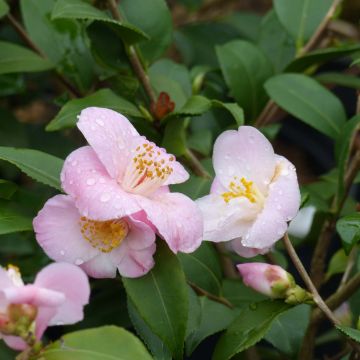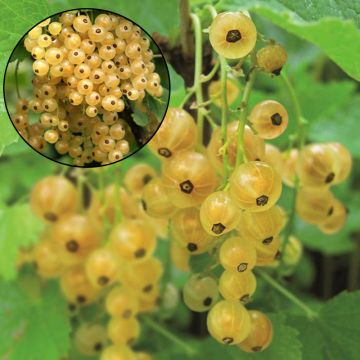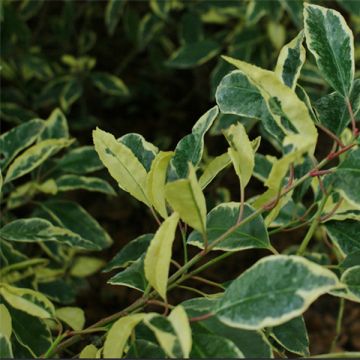

Buddleja globosa - Orange Ball Tree
Buddleja globosa - Orange Ball Tree
Buddleja globosa
Orange Ball Tree, Orange-ball Buddleja, Buddleja globosa
Special offer!
Receive a €20 voucher for any order over €90 (excluding delivery costs, credit notes, and plastic-free options)!
1- Add your favorite plants to your cart.
2- Once you have reached €90, confirm your order (you can even choose the delivery date!).
3- As soon as your order is shipped, you will receive an email containing your voucher code, valid for 3 months (90 days).
Your voucher is unique and can only be used once, for any order with a minimum value of €20, excluding delivery costs.
Can be combined with other current offers, non-divisible and non-refundable.
Home or relay delivery (depending on size and destination)
Schedule delivery date,
and select date in basket
This plant carries a 24 months recovery warranty
More information
We guarantee the quality of our plants for a full growing cycle, and will replace at our expense any plant that fails to recover under normal climatic and planting conditions.
Would this plant suit my garden?
Set up your Plantfit profile →
Description
Buddleja globosa, commonly known as the Orange Ball Tree Butterfly Bush, is a botanical species native to South America (Peru, Chile, and Argentina) recognisable by its small orange-yellow flowers in the form of little balls grouped in loose panicles. The bush forms a large rounded shrub over time, adorned with large semi-evergreen dark green leaves in winter. Despite its origins, this plant is hardy enough to be grown in many regions with moderate winters and not-too-dry summers. And like all other buddleias, its sweetly scented flowering attracts butterflies.
The globular buddleia was introduced to Europe in the 18th century from South America. In its native lands, it grows on mountain foothills, regularly watered by rain, in open environments, sometimes at high altitudes. Like all Buddleias, this species belongs to the Scrophulariaceae or Buddlejaceae family, depending on the classification. It is well adapted to our oceanic climates. Buddleja globosa displays a bushy and rounded habit, its growth is quite fast. It reaches a height and width of 3 to 4 m at maturity, sometimes less, depending on the growing conditions. Its leaves are ovate, tapering to a point, 20 cm long and 7 cm wide. They are dark green with a velvety underside. The foliage persists if temperatures do not drop below -10°C. Flowering occurs from May to June-July, with tiny tubular flowers, grouped in round panicles, 2 cm in diameter, exuding a pleasant honey fragrance. They are carried in large airy corymbs, of 5 to 10. This robust and adaptable shrub appreciates well-drained soils, tolerates limestone soils, and adapts to various climatic conditions, including coastal areas. However, it does not tolerate the dry and hot Mediterranean climate. The crown of a mature plant can survive a brief frost of around -14°C, in well-draining soil. If the bush regrows from the crown, it will not flower that year. Unlike Buddleia davidii, this species is not invasive.
Use your globular buddleia in an informal hedge, in a flower bed, associated with other shrubs that flower simultaneously or at different times. Consider evergreen ceanothus, brooms, silvery shrubs like the coyote willow or Elaeagnus commutata 'Zempin', Buddleia alternifolia another original butterfly bush, or ornamental crabapple trees...
Buddleja globosa - Orange Ball Tree in pictures


Plant habit
Flowering
Foliage
Botanical data
Buddleja
globosa
Scrophulariaceae (Buddlejaceae)
Orange Ball Tree, Orange-ball Buddleja, Buddleja globosa
South America
Planting and care
Buddleia globosa prefers sunny spots, sheltered from cold and dry winds. Plant it in deep, fertile, well-drained soil, not too dry in summer. Water once or twice a week to facilitate establishment. Afterwards, once well rooted, the bush can do without watering in summer unless it doesn't rain for a month or more. It can be useful to mulch the base of young plants in winter to protect their crown, but also in summer to save on watering.
Planting period
Intended location
Care
Planting & care advice
This item has not been reviewed yet - be the first to leave a review about it.
Similar products
Haven't found what you were looking for?
Hardiness is the lowest winter temperature a plant can endure without suffering serious damage or even dying. However, hardiness is affected by location (a sheltered area, such as a patio), protection (winter cover) and soil type (hardiness is improved by well-drained soil).

Photo Sharing Terms & Conditions
In order to encourage gardeners to interact and share their experiences, Promesse de fleurs offers various media enabling content to be uploaded onto its Site - in particular via the ‘Photo sharing’ module.
The User agrees to refrain from:
- Posting any content that is illegal, prejudicial, insulting, racist, inciteful to hatred, revisionist, contrary to public decency, that infringes on privacy or on the privacy rights of third parties, in particular the publicity rights of persons and goods, intellectual property rights, or the right to privacy.
- Submitting content on behalf of a third party;
- Impersonate the identity of a third party and/or publish any personal information about a third party;
In general, the User undertakes to refrain from any unethical behaviour.
All Content (in particular text, comments, files, images, photos, videos, creative works, etc.), which may be subject to property or intellectual property rights, image or other private rights, shall remain the property of the User, subject to the limited rights granted by the terms of the licence granted by Promesse de fleurs as stated below. Users are at liberty to publish or not to publish such Content on the Site, notably via the ‘Photo Sharing’ facility, and accept that this Content shall be made public and freely accessible, notably on the Internet.
Users further acknowledge, undertake to have ,and guarantee that they hold all necessary rights and permissions to publish such material on the Site, in particular with regard to the legislation in force pertaining to any privacy, property, intellectual property, image, or contractual rights, or rights of any other nature. By publishing such Content on the Site, Users acknowledge accepting full liability as publishers of the Content within the meaning of the law, and grant Promesse de fleurs, free of charge, an inclusive, worldwide licence for the said Content for the entire duration of its publication, including all reproduction, representation, up/downloading, displaying, performing, transmission, and storage rights.
Users also grant permission for their name to be linked to the Content and accept that this link may not always be made available.
By engaging in posting material, Users consent to their Content becoming automatically accessible on the Internet, in particular on other sites and/or blogs and/or web pages of the Promesse de fleurs site, including in particular social pages and the Promesse de fleurs catalogue.
Users may secure the removal of entrusted content free of charge by issuing a simple request via our contact form.
The flowering period indicated on our website applies to countries and regions located in USDA zone 8 (France, the United Kingdom, Ireland, the Netherlands, etc.)
It will vary according to where you live:
- In zones 9 to 10 (Italy, Spain, Greece, etc.), flowering will occur about 2 to 4 weeks earlier.
- In zones 6 to 7 (Germany, Poland, Slovenia, and lower mountainous regions), flowering will be delayed by 2 to 3 weeks.
- In zone 5 (Central Europe, Scandinavia), blooming will be delayed by 3 to 5 weeks.
In temperate climates, pruning of spring-flowering shrubs (forsythia, spireas, etc.) should be done just after flowering.
Pruning of summer-flowering shrubs (Indian Lilac, Perovskia, etc.) can be done in winter or spring.
In cold regions as well as with frost-sensitive plants, avoid pruning too early when severe frosts may still occur.
The planting period indicated on our website applies to countries and regions located in USDA zone 8 (France, United Kingdom, Ireland, Netherlands).
It will vary according to where you live:
- In Mediterranean zones (Marseille, Madrid, Milan, etc.), autumn and winter are the best planting periods.
- In continental zones (Strasbourg, Munich, Vienna, etc.), delay planting by 2 to 3 weeks in spring and bring it forward by 2 to 4 weeks in autumn.
- In mountainous regions (the Alps, Pyrenees, Carpathians, etc.), it is best to plant in late spring (May-June) or late summer (August-September).
The harvesting period indicated on our website applies to countries and regions in USDA zone 8 (France, England, Ireland, the Netherlands).
In colder areas (Scandinavia, Poland, Austria...) fruit and vegetable harvests are likely to be delayed by 3-4 weeks.
In warmer areas (Italy, Spain, Greece, etc.), harvesting will probably take place earlier, depending on weather conditions.
The sowing periods indicated on our website apply to countries and regions within USDA Zone 8 (France, UK, Ireland, Netherlands).
In colder areas (Scandinavia, Poland, Austria...), delay any outdoor sowing by 3-4 weeks, or sow under glass.
In warmer climes (Italy, Spain, Greece, etc.), bring outdoor sowing forward by a few weeks.

















































